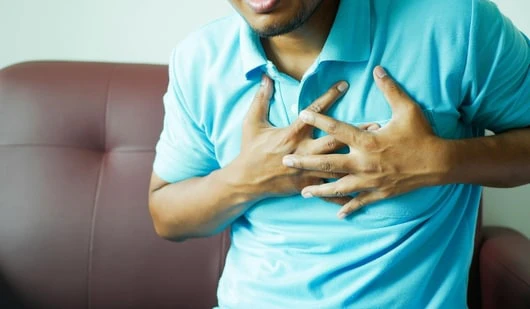Our heart is one of the most important organs in our body. However, in today’s fast-paced life, it is constantly under strain. Often, stress, unhealthy lifestyles, and silent medical conditions take a toll on our hearts, sometimes triggering serious emergencies like a heart attack or cardiac arrest.
For many, both heart attack and cardiac arrest are the same conditions, as they affect the heart. However, according to Dr Rajeev Vashisth, senior consultant, cardiothoracic and vascular surgery, HCG Hospitals, Bhavnagar, recognising the difference, especially during the golden hour, the first 60 minutes after symptoms begin, can be the deciding factor between survival and irreversible damage.
Heart attack vs cardiac arrest
Per Dr Vashisth, a heart attack, or medically known as myocardial infarction, occurs when one or more of the coronary arteries that supply blood to the heart muscle become blocked, usually by a clot formed over a fatty plaque. Without oxygen-rich blood, that part of the heart muscle begins to die.
 Common symptoms include:
Common symptoms include:
- Chest pain or angina, often spreading to the arm, shoulder, neck, or jaw
- Shortness of breath
- Nausea or vomiting
- Cold sweats
- Light-headedness or sudden fatigue
Dr Vashisth explains, “The symptoms may develop suddenly or gradually, but one thing is constant: the need for urgent medical care. The golden hour of the first 60 minutes is a critical window during which timely intervention, such as medication or an emergency angioplasty, can restore blood flow, reduce damage to the heart, and improve survival.”
Meanwhile, a cardiac arrest, on the other hand, is far more abrupt. It occurs when the heart’s electrical system malfunctions, causing the heart to stop pumping blood effectively. “This leads to an immediate loss of consciousness, pulse, and breathing. Without urgent CPR and defibrillation, death can occur within minutes,” Dr Vashisth explains. Here are some key warning signs he suggested:
- Sudden collapse
- No breathing or pulse
- Loss of responsiveness
“Unlike a heart attack, cardiac arrest offers no slow build-up. It demands instant action, calling emergency services, starting chest compressions, and using an automated external defibrillator (AED) if available (CPR),” Dr Vashisth pointed out.
Diagnosis and treatment
Per Dr Vashisth, for a heart attack, doctors rely on ECGs, blood tests (to detect heart muscle enzymes), and imaging tests like angiography to locate and treat blockages. “Immediate treatment may involve clot-busting drugs, angioplasty, or stent placement to restore blood flow,” he adds.
Meanwhile, for cardiac arrest, time is life. “Diagnosis happens on the spot. If someone is unresponsive and not breathing, it is likely a cardiac arrest. If available, bystanders should start CPR immediately and use an automated external defibrillator (AED). Emergency teams will use advanced life support and medications, and may perform procedures to stabilise the patient once they reach the hospital,” he advised.
